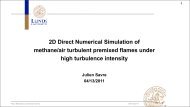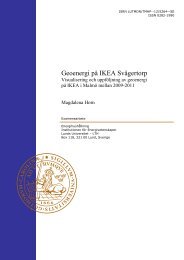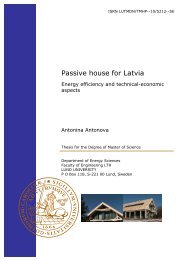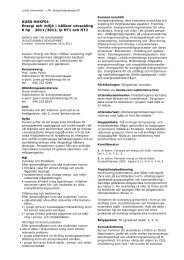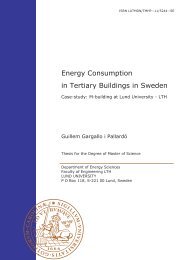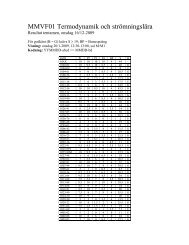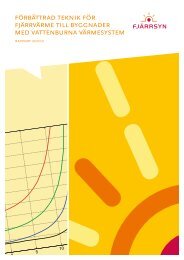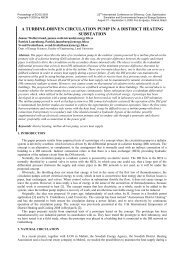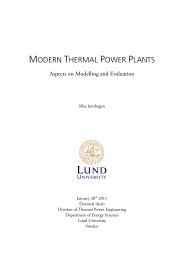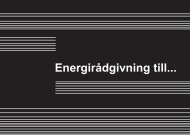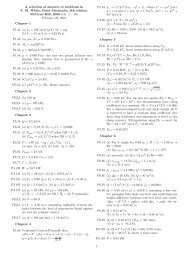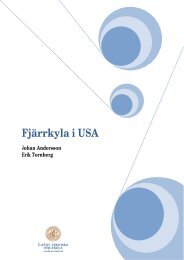Thesis for degree: Licentiate of Engineering
Thesis for degree: Licentiate of Engineering
Thesis for degree: Licentiate of Engineering
Create successful ePaper yourself
Turn your PDF publications into a flip-book with our unique Google optimized e-Paper software.
2.3 Lattice Boltzmann method<br />
LBM has shown promising simulation results <strong>of</strong> fluid flows and mass diffusion through<br />
complex geometries and this is an attractive characteristic <strong>for</strong> fuel cell modeling.<br />
Conventional CFD methods use fluid density, velocity and pressure as their primary<br />
variables, while the LBM uses a more fundamental approach with a so-called particle velocity<br />
distribution function (PDF) [16]. The PDF is here denoted f a and originates from the basic<br />
Boltzmann gas concepts where a derived simplified <strong>for</strong>m <strong>of</strong> the Boltzmann equation is<br />
described by classical mechanics with statistical treatment based on the high number <strong>of</strong><br />
particles. The distribution is described by the coordinates <strong>of</strong> the position and momentum<br />
vectors, and the time step [3].<br />
The LBM framework is built on lattice points, which are given locations placed all over the<br />
solution domain. The lattice unit (lu) is a fundamental measure <strong>of</strong> length and the time step (ts)<br />
is the measure <strong>of</strong> the time unit. The neighboring particles are connected to the main focused<br />
particle at the time with the velocity magnitude e a , schematically described in Figure 2.3 from<br />
a 2D point <strong>of</strong> view. This type <strong>of</strong> structural framework is called D2Q9 and stands <strong>for</strong> two<br />
dimensions with nine velocities marked as e a , where a represents the direction (= 0, 1, 2... 8)<br />
[3, 16]. For the 2D case, there exist two appropriate choices <strong>of</strong> system structure, namely<br />
D2Q5 and D2Q9 with 5 and 9 directional velocities, respectively. The D2Q9 framework has<br />
the possibility to capture more in<strong>for</strong>mation but will be computationally heavier than the<br />
smaller one D2Q5.<br />
Figure 2.3: Schematic structural framework <strong>for</strong> the D2Q9 lattice and velocities.<br />
The PDF is defined as the number <strong>of</strong> particles <strong>of</strong> the same species travelling along a particular<br />
direction with a particular velocity. The single-particle distribution function f a can essentially<br />
be seen as a histogram representing a frequency <strong>of</strong> occurrence. The frequencies can be<br />
considered to be direction specific fluid densities. The LBM is described by two different<br />
actions taking part at each lattice point (site); namely streaming and collision. Streaming<br />
describes the movement <strong>of</strong> the particles <strong>of</strong> each species and the collision describes the<br />
interactions between the particles <strong>of</strong> the same or different species. Furthermore, these actions<br />
are combined in the LB equation called the distribution function [3, 14-16].<br />
9



